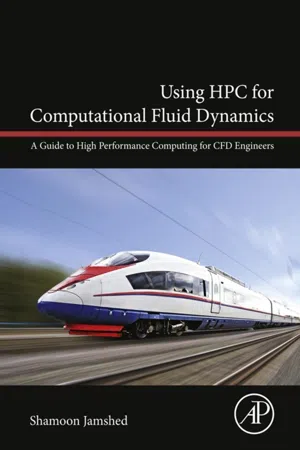
Using HPC for Computational Fluid Dynamics
A Guide to High Performance Computing for CFD Engineers
Shamoon Jamshed
- 226 páginas
- English
- ePUB (apto para móviles)
- Disponible en iOS y Android
Using HPC for Computational Fluid Dynamics
A Guide to High Performance Computing for CFD Engineers
Shamoon Jamshed
Información del libro
Using HPC for Computational Fluid Dynamics: A Guide to High Performance Computing for CFD Engineers offers one of the first self-contained guides on the use of high performance computing for computational work in fluid dynamics.
Beginning with an introduction to HPC, including its history and basic terminology, the book moves on to consider how modern supercomputers can be used to solve common CFD challenges, including the resolution of high density grids and dealing with the large file sizes generated when using commercial codes.
Written to help early career engineers and post-graduate students compete in the fast-paced computational field where knowledge of CFD alone is no longer sufficient, the text provides a one-stop resource for all the technical information readers will need for successful HPC computation.
- Offers one of the first self-contained guides on the use of high performance computing for computational work in fluid dynamics
- Tailored to the needs of engineers seeking to run CFD computations in a HPC environment